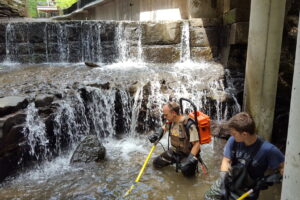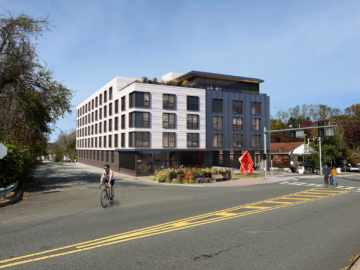 Ah, Westchester! The schools – and, come summer, the pools. The many fab restaurants, the neighborhood haunts. The lush abundant greenery – the gorgeous sprawling scenery. Okay, enough bad poetry, let’s get down to brass tacks, er, taxes. The oft-quoted phrase about the only two things anyone can be sure of in life generally refers to death and taxes, meaning income taxes – though in Westchester the bite is just as strong, if not stronger, for property taxes. Note, too, that according to the Census Bureau 61.4% of Westchester housing is owner-occupied.
Ah, Westchester! The schools – and, come summer, the pools. The many fab restaurants, the neighborhood haunts. The lush abundant greenery – the gorgeous sprawling scenery. Okay, enough bad poetry, let’s get down to brass tacks, er, taxes. The oft-quoted phrase about the only two things anyone can be sure of in life generally refers to death and taxes, meaning income taxes – though in Westchester the bite is just as strong, if not stronger, for property taxes. Note, too, that according to the Census Bureau 61.4% of Westchester housing is owner-occupied.
ATTOM Data Solutions, a firm based in Irvine, California, that collects and licenses real estate data, has ranked Westchester County numero uno nationwide for having the highest property taxes (www.attomdata.com – click on the news tab) for the past two consecutive years (the years covered by ATTOM’s survey).
In fact, out of 1,414 U.S. counties with at least 10,000 single family homes, only nine counties averaged property taxes above $10,000 annually. And even though those with the highest average property taxes on single family homes were all in the greater New York metro area, Westchester led by a substantial margin with an average of $17,179 as opposed to number two, Rockland County which averaged $12,924.
While school taxes sting the most, accounting for approximately 2/3 of one’s annual property tax bill, village taxes are generally second or roughly 20% of the bill, with county or town taxes usually a very close third or 15%. Also worth noting: we get to vote on the school taxes; there’s no vote on village taxes.
So, where does the money go? We asked Village Administrators and Managers in the Villages covered by River Journal. In some cases, not every question was answered; in some, a great deal of extra info was offered. This should give residents a sense of where your dollars are going.
Tarrytown
What is Tarrytown’s projected estimated budget in millions?
General Fund – $25,149,127
Plus:
Water Fund – $6,163,623
Library Fund – $1,756,368
Sewer Fund – $195,053
What was last year’s approved budget?
General Fund – $23,783,696
Plus:
Water Fund – $5,832,773
Library Fund – $1,715,400
Sewer Fund – $185,311
Budget Breakdown – in numbers and in terms of percent of total budget:
Health Insurance – $2,930,353 – 11.65% of total budget
Pension – $1,687,932 – 6.71% of total budget
Infrastructure and Roads (all-inclusive) – $1,409,913 – 5.61% of total budget
Principal on Bonds – $2,351,737 – 9.35% of total budget
Interest on Bonds – $1,111,947 – 4.42% of total budget
Employees on the payroll:
Approximately 91.5
In addition to the information above, Richard Slingerland, Village Administrator, told River Journal:
• This is a 2% Tax Cap Compliant Budget
• The Village’s tax levy went from $15,748,010 to $16,438,666
• The actual total tax levy increase is about 3.4%, but this is adjusted due to a growth factor of 3.11%, reflecting all of the new taxable values on our assessment rolls
• The tax rate increased about 1.62%.
• The Board adopted the budget on April 16 by unanimous vote of 7-0.
Irvington
1. What is Irvington’s projected estimated budget this year in millions?
$18,133,497
2. What was last year’s approved budget, and what is the % increase in taxes this year over last year?
$17,329,177 / No change in tax rate this year versus last year
3. How does the budget break down, in numbers and in terms of percent of total budget?
• Health insurance? – $2,474,316; 13.6% of total budget
• Retirement and pension funds? – $1,531,500; 8.4% of total budget
• Infrastructure and Roads? – $160,000 (0.8% of total budget) is specifically for infrastructure repairs in the operating budget. This does not include any funds that will be approved in the capital budget, which is not adopted yet.
• Interest on bonds? – $297,967; 1.6% of total budget
4. How many employees are on the payroll?
67 Full-time employees
Briarcliff Manor
1. What is Briarcliff Manor’s projected estimated budget this year in millions?
General Fund: GF (General Fund = all sources/uses) $17.6 million
2. What was last year’s approved budget, and what is the % increase in taxes this year over last year?
2017/18 2018/19
GF $16,914,480 $17,603,657.75
Tax Levy $10,846,173 $11,027,877
1.68% levy increase
3. How does the budget break down, in numbers and in terms of % of total budget?
• Health insurance:
$2,306,330.89 13.10% of total budget
• Retirement and pension funds:
$1,149,207.00 6.53% of total budget
• Infrastructure and Roads:
$1,473,986.32 8.37% of total budget
• Interest on bonds:
$1,583,386.42 8.99% of total budget
• Other – services, etc.:
$11,603,657.75 63.00% of total budget
4. How many employees are on the payroll?
Full-time: 73
Part-time: 197 (summer camp and summer pool seasonal employees)
Sleepy Hollow
1. What is Sleepy Hollow’s projected estimated budget this year in millions?
$23,273,785
2. What was last year’s approved budget, and what is the % increase in taxes this year over last year?
$22,682,890; 2.8928% increase for Homestead; 9.9635% decrease for Non-Homestead
3. How does the budget break down, in numbers and in terms of % of total budget?
• Health insurance: $2,437,000 – 10.47% of Total Budget
• Retirement and pension funds: $1,645,000 – 7.07% of Total Budget
• Infrastructure and Roads: Highway Dept. $856,299 – 3.68% of Total Budget
• Interest on bonds: Long Term Debt $1,757,649 – 7.55% of Total Budget
Short Term Debt $367,950– 1.58% of Total Budget
4. How many employees are on the payroll?
75 Full-time
28 Part-time
Ossining
1. What is the Village of Ossining’s projected estimated budget this year in millions?
The 2018 Adopted Budget is $51,857,388 ($51.86 million), net of interfund transfers.
2. What was last year’s approved budget, and what is the % increase in taxes this year over last year?
The 2017 Adopted Budget is $51,544,680, net of interfund transfers.
The total tax levy increased in 2018 by 1.09%, but there was no increase in the property tax rate.
3. How does the budget break down, in numbers and in terms of % of total budget?
• Health insurance: $6,256,669 is 12.1% of the $51.8 million budget. For 2017, the percent was 12.5%.
• Retirement and Pensions: $3,655,319 combined ERS & PFRS is 7.0% of the $51.8 million budget (ERS is 3.1%, PFRS is 3.9%). For 2017, the percent was 6.9% (ERS was 3.1%, PFRS was 3.8%).
• Infrastructure and Roads: None of the capital projects were in the 2018 or 2017 adopted operating budget. The intent was to issue serial bonds and/or use surplus accumulated fund balance, and NOT levy property taxes for such projects up front in the operating budget. When debt is issued, it becomes part of the operating budget in subsequent years as the debt is retired.
• Interest on bonds/BAN’s: $893,750 combined is 1.7% of the $51.8 million budget. For 2017, the percent was 1.8%.
• Other – services, etc.: The Trustees on the Village Board are interested in advancing economic development and expanding quality housing, and improving customer service. In 2018, funds are allocated to create an economic development strategy, begin an update to the comprehensive plan with updates to the zoning code, and to address parking throughout the Village in response to several plans that were created over the last year by Kevin Dwarka for housing and the Downtown Revitalization Working Committee (DRWC) for revitalizing downtown. In addition, the Board is interested in improving housing conditions and tackling sanitation issues. The budget provides for an additional building inspector, code enforcement officers, and a community development director to increase the Village’s ability to provide service in the building department. It is an exciting time for the Village, and this budget provides the resources needed to accomplish their agenda.
4. How many employees are on the payroll?
Generally, we have about 180 full-time and 43 part-time (recreation, school crossing guards, clerical) employees on the payroll throughout the year. In the summer months, we add about 100 to 105 more part-time employees for the Recreation camps, and to assist the DPW and Parks Department work crews. These numbers were generally the same in 2017 as in 2018.






